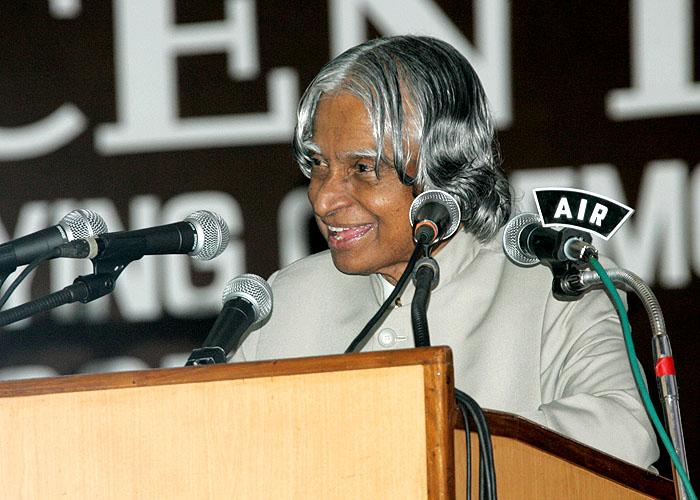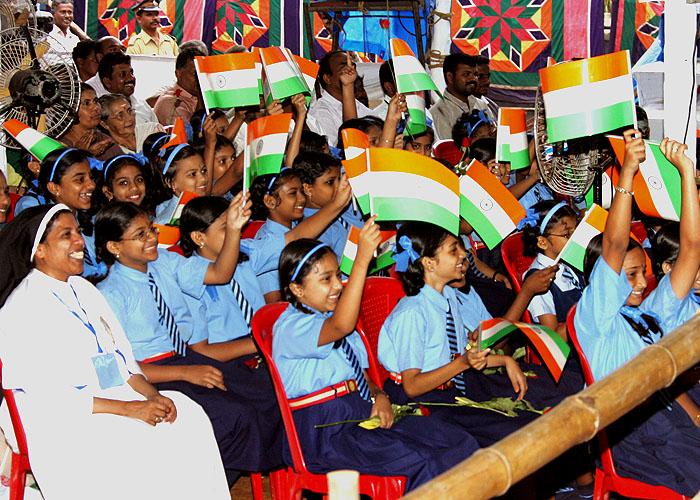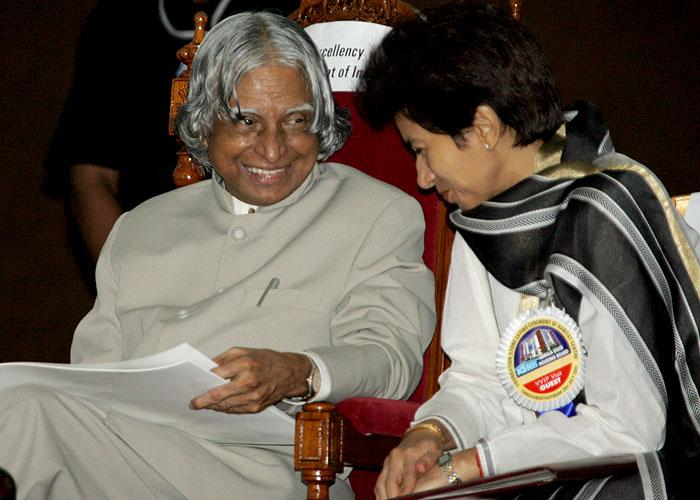Address at the Foundation Stone Laying Ceremony of the Habitat Centre, Thiruvananthapuram
Thiruvananthapuram : 28-07-2005
Habitat Centre : Model Complex for Kerala
I am delighted to participate in the Foundation stone Laying Ceremony of the Habitat Centre, Thiruvananthapuram. I greet the Government of Kerala, Kerala State Housing Board (KSHB) and the Housing and Urban Development Corporation Limited (HUDCO) for promoting this innovative joint venture. I am happy to note that the Habitat Centre through co-location will integrate the activities of Housing Board, Housing Corporation, Housing Financial Institutions, Construction and Consulting firms, Environmentalists, Private Builders, NGOs and Associations leading to synergy between these institutions.
This Habitat Centre should become a model for future buildings in Kerala to create renewable energies, benign environment and a monitoring system for progressively mitigating the effects of climatic change. With this in mind, the designers have to set goals for greater energy efficiency through the use of renewable energies, efficient water management including water harvesting and water recycling and above all work towards generating a clean environment. I would like to discuss on the topic "Habitat Centre : Model Complex for Kerala"
The developed societies thriving on consumption, isolate pieces of nature, take them into the laboratory to study and control them for their commerce. The purpose should be to integrate with Nature. Now I would like to share with you two examples of such integration.
Large Scale Solar Cooking
Solar cooking is one of the important applications in the field of renewable energy. During the last 20 years many designs and concepts have been developed and tested in the field of family cooking in the form of box type solar cookers. Now a new technology has come to complement the box cookers. With this technology it is possible to cook for larger number of persons using solar energy within a short span of time. I have come across one of the institutions in Rajasthan which has manufactured in their own workshop and installed a large solar steam cooking system at their headquarters. The system is designed for cooking 2000 meals twice daily Typically 1 Mega Watt hour energy is being consumed every day which is realized free of cost and cooking system does not add any pollution to the complex.
I am citing this example to suggest to you the necessity for making such systems in the Habitat Centre which can substantially reduce the energy, cost and also minimize the pollution created by using other forms of energy sources.
High Efficiency Nano Crystal LEDs
A leading Nano technologist recently met me at Rashtrapati Bhavan. He demonstrated to me a very optimal and efficient lighting system based on Nano crystals. The recent advances in semi conductor based lighting chips ? Light Emitting Diodes (LED) can provide six hours of reliable light to every home or shop in a village at virtually no recurring energy cost and minimum installation cost. These LEDs require a tiny fraction of energy used for other forms of lighting. LED based lighting can be easily provided with solar panels or foot pedal generators. For nearly 40 years LEDs were weak color light sources (Green, Amber and Red) used mostly as indicators and numeric light. LED technology in recent years has improved dramatically. Today LEDs, using 10 watt of power could produce light equivalent to a sixty-watt filament lamp. New discoveries in Nano technology make LEDs much brighter and make the products less expensive, which can revolutionize electrification for lighting. Such novel devices can be used by the Habitat Centre as electrical fitment in the new complex. HUDCO can take up this as a mission for rural/urban electrification in their buildings.
Energy consumption: Targets
It is reported that the total energy consumption patterns in Indian Buildings are as follows:
Commercial sector :
21.6 billion kwh (32% for A/C, 60% for lighting, 8% others)
Residential sector :
36 billion kwh (35% light, 29 % fan, 7% cooler, 14% Refrigeration, 4% A/C, 11% others)
One of our experts says that "For a normally constructed building, the present energy consumption in the country is 300 kwh per m sq annually whereas in Germany with its strict energy codes it is reported that the consumption is only 50 kwh per m sq annually." I would suggest this model must be taken into account in the design phase of this Habitat Centre.
Energy conservation should start right from the location of the site, the direction of buildings, windows, doors, glare etc., the aim should be to use maximum advantage of the sun and wind, while minimizing the wasteful heat load from sun into the buildings and roofs. The architects and building planners have to play a very important role in the design of the building with such features.
Conclusion: Eight missions for Habitat Centre
The design and construction of the Habitat Centre should be carried out in such a way that the following goals are realized.
1. Plan and implement maximum use of solar energy for lighting, heating, air conditioning and cooking in the complex leading to at least fifty percent reduction in annual energy cost per square meter of built-up area compared to Delhi Habitat Centre.
2. Install a water harvesting, water recycling and water management scheme leading to seventy five per cent reduction in the over all per square meter annual requirement of water in relation to other buildings of similar standard.
3. The Habitat Centre should use cost effective standards for construction which will make it immune to earthquake and also provide protection mechanism and appliances to avoid fire and other natural hazards.
4. The Habitat Centre should be water proof, aesthetically designed, require near zero external maintenance and have a clean, green environment.
5. All services such as civil, electrical, water, drainage, gas, and communication should be planned in an integrated way so that there is no need for rework after initial construction.
6. The building design and construction should be friendly to differently challenged people.
7. Maximum use to be made of green building materials such as recycled fly-ash bricks, equipment and green building concepts to minimize the embodied energy to the level of less than 3500 kwh/sq.m.
8. Plan and implement an integrated waste management system which will minimize the pollution and convert waste into wealth.
My best wishes to all of you for success in creation of a state-of-the-art zero maintenance building in Kerala and this should spread.
May God bless you.




